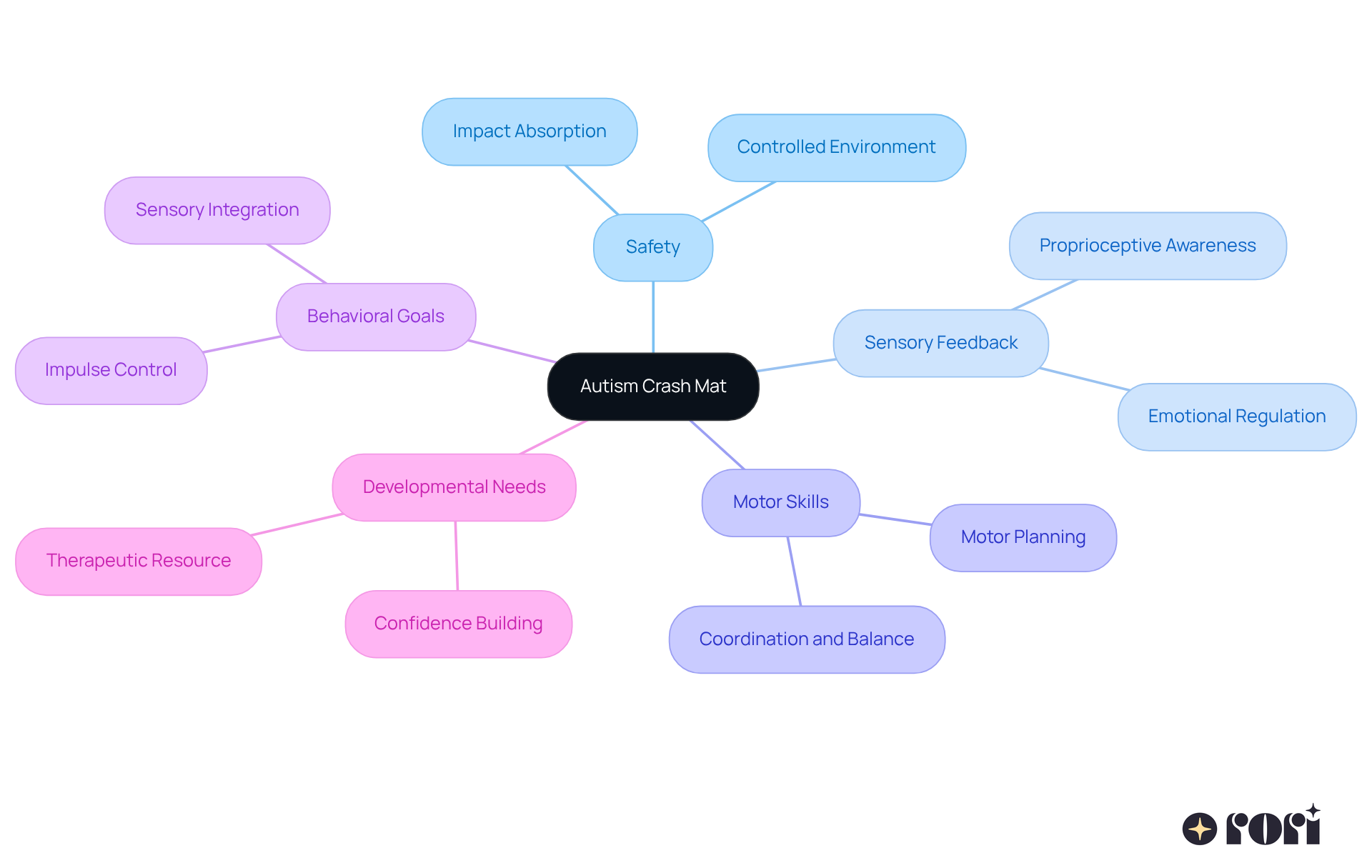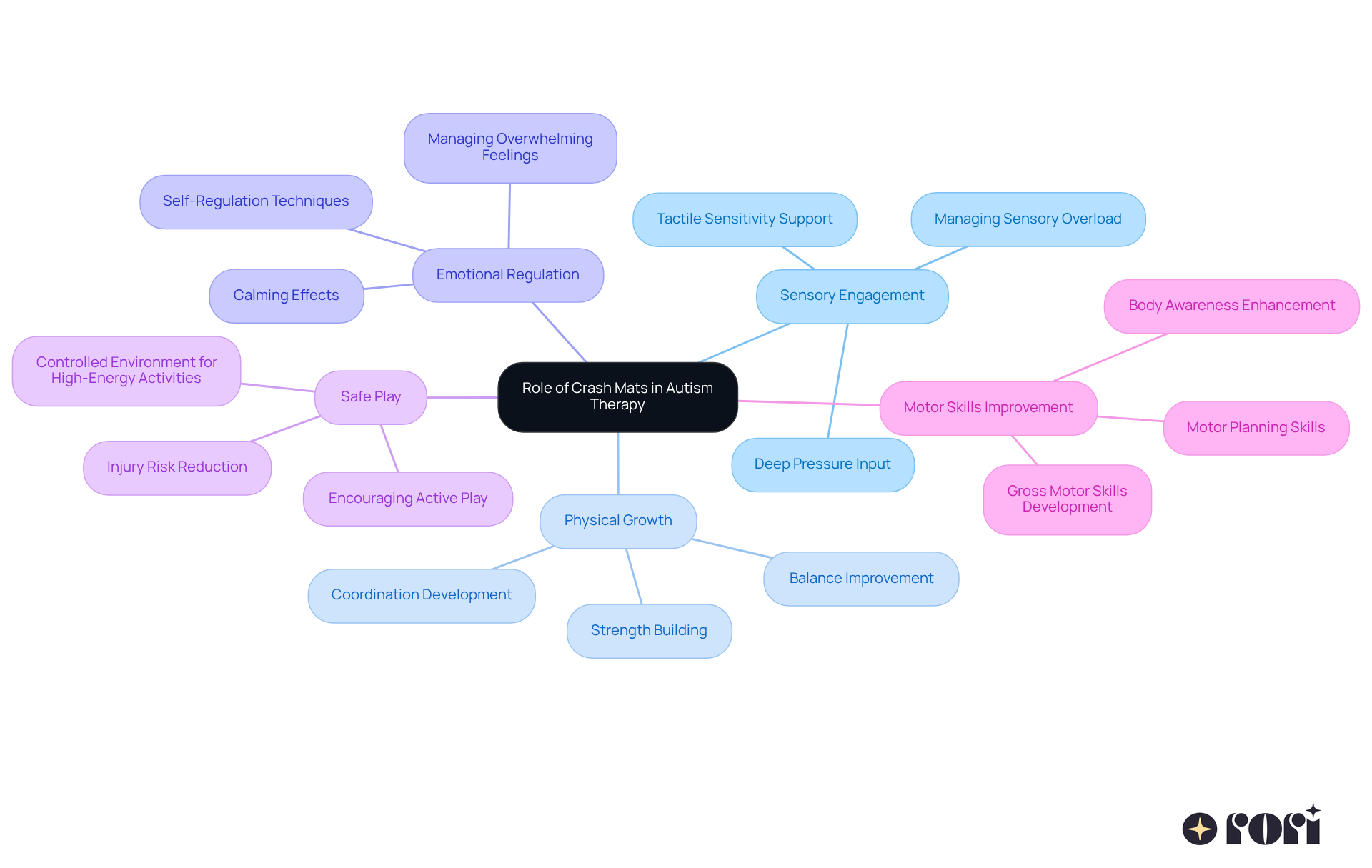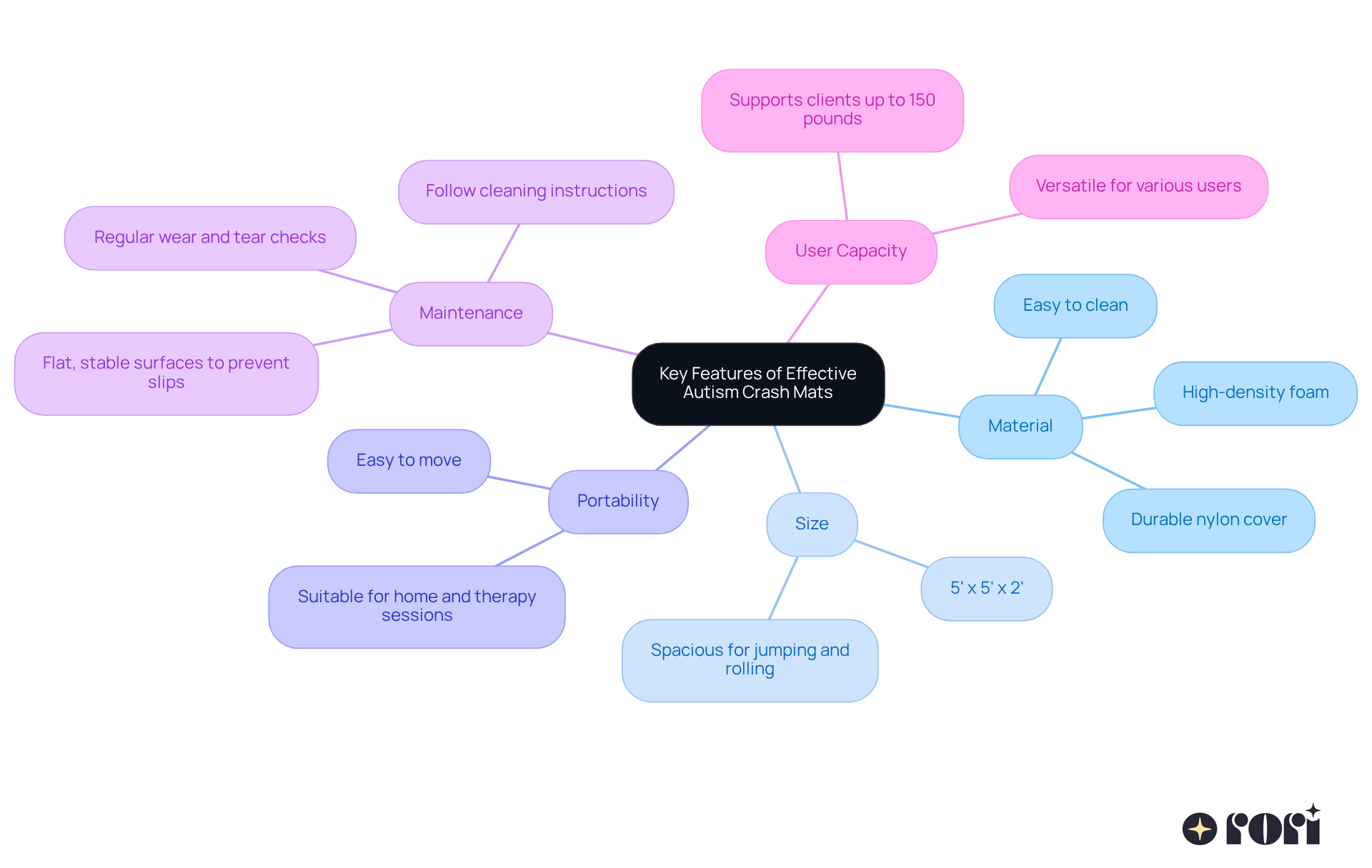Navigating the world of autism therapy can feel overwhelming at times, can’t it? With so many innovative tools emerging, it’s heartening to see resources designed to enhance the safety and development of children on the spectrum. Among these, autism crash mats truly shine. They’re not just there to cushion falls; they also encourage sensory engagement and help develop motor skills.
As caregivers, we often find ourselves searching for effective ways to support our children. This brings up an important question: how do these specialized mats contribute to both safety and therapeutic growth for kids with autism? By exploring their purpose, history, and unique features, we can uncover the pivotal role these mats play in creating a nurturing environment for exploration and learning.
Let’s dive in together and discover how these tools can make a difference in our children’s lives!
An autism crash mat is a specialized cushion that provides a safe and supportive surface for kids with autism to jump, tumble, and fall. Made from soft, durable materials, these autism crash mats effectively absorb impact, reducing the risk of injury during energetic play. They create a controlled environment where children can explore their physical abilities while receiving important sensory feedback that supports emotional balance and growth.
By offering a safe landing area, these autism crash mats encourage kids to take risks in their movements, which is vital for building confidence and improving motor skills. Research shows that these surfaces help with motor planning through activities like jumping and rolling, enhancing both physical and cognitive coordination. Plus, autism crash mats are essential in managing sensory-seeking behaviors, providing a safe space for kids to release excess energy and cope with overwhelming sensory input.
Caregivers familiar with ABA principles can seamlessly integrate autism crash mats into their routines. For instance, they can use positive reinforcement techniques to encourage safe play on the mats, helping kids understand their movement limits. Case studies highlight their effectiveness in achieving behavioral goals related to sensory integration, such as helping young ones manage sensory overload and improve impulse control. Specific examples include using an autism crash mat as a padded surface during therapy sessions to create a secure environment for practicing self-regulation techniques.
Overall, autism crash mats are designed not only for safety but also to address the developmental needs of children, making them an invaluable resource in therapeutic settings. Let’s explore this together! We’re here to help you every step of the way!

When it comes to autism treatment, an autism crash mat serves as a cushioning surface that is a game changer for sensory engagement and physical growth. They’re often used in occupational therapy sessions to help kids with autism manage sensory overload and improve their gross motor skills with an autism crash mat. By providing a safe space for active play, crash pads encourage movement exploration, which is super important for little ones who might struggle with coordination and body awareness.
Imagine your child rolling back and forth, jumping, or climbing! These activities not only enhance physical abilities but also offer sensory input that helps with emotional regulation. Plus, these pads can play a key role in teaching self-regulation techniques, as kids learn to recognize their physical limits and engage in safe play. The calming effects of impact pads also support emotional stability, making them a valuable tool in therapy settings.
As Caitlyn Beemus shares, "My 2.5-year-old son enjoys jumping off his nugget and being thrown onto the landing pad." This highlights the joy kids can find in these activities! Research shows that playing on padded surfaces can improve motor planning and coordination, which are crucial for overall development.
Take the Black Diamond Mondo Mat, for example, priced at $400. It’s an investment that many parents consider for these therapeutic tools. Therapists, guided by Rori Care's clinical leadership, have observed that impact pads help kids transition from high-energy play to calmer states, effectively managing overwhelming sensory experiences.
This multifaceted approach really underscores the importance of an autism crash mat in creating a supportive and effective therapeutic environment for children with autism. If you’re a parent, don’t hesitate to seek professional guidance to tailor these strategies to your child’s unique needs. Consider implementing data collection methods to track progress and support your child’s behavioral goals through active involvement. Let’s explore this together!

Understanding autism and processing disorders is becoming more common, and it’s great to see how protective pads have developed alongside this knowledge. Originally designed for safety in physical education and gymnastics, these impact pads have transformed into essential tools for enhancing sensory experiences. As we’ve learned more about sensory needs, it’s clear that the autism crash mat offers significant benefits, especially for kids who are sensory-seeking.
Today’s protective pads are thoughtfully crafted to meet these specific needs. They come with various foam densities for the best support and washable covers to keep things clean. Plus, they serve as self-regulation tools, helping children transition from high-energy activities to a calmer state. This shift reflects a broader movement toward inclusive therapeutic practices, with protective padding now widely used in homes and clinics alike.
Rori Care's clinical leadership team highlights how important it is for caregivers to be educated on using these tools effectively. This knowledge can really enhance their therapeutic value. By working with occupational therapists to assess the right impact pads, caregivers can better manage sensory overload and support emotional regulation. Let’s explore this together and see how we can make a difference!

When it comes to autism crash mat surfaces, there are some key features that really make a difference for our kids. First off, high-density foam is a must! It provides the cushioning and support needed to keep our little ones safe during those inevitable falls. Plus, the material should be durable and easy to clean—after all, hygiene is super important in therapeutic settings. Many of these pads come with a tough nylon cover that makes cleanup a breeze.
Now, let’s talk about size. Ideally, landing pads should be spacious—think about 5' x 5' x 2'. This size allows kids to jump, roll, and fall without a worry. Some pads even have weighted elements, which can be really soothing for children who experience sensory processing challenges. It’s all about creating a safe space where they can explore and play!
Portability is another biggie. We want these pads to be easy to move between home and therapy sessions, ensuring that our kids have access to their safety cushions whenever they need them. Regular maintenance is key, too. Checking for wear and tear helps minimize risks, and placing the pads on flat, stable surfaces is crucial to prevent slips.
And here’s a little bonus: these crash pads can support clients weighing up to 150 pounds, making them versatile for a range of users. So, whether it’s for playtime at home or during therapy, these autism crash mats are designed to keep our kids safe and happy. Let’s explore this together and find the best options for our little ones!

Autism crash mats are truly essential for children with autism, providing a safe and supportive space for play and sensory exploration. These specialized cushions not only absorb impact but also encourage physical activity, helping kids move around while developing important motor skills and emotional regulation. By incorporating crash mats into therapeutic practices, we highlight their role in building confidence and managing sensory-seeking behaviors.
Throughout this journey, we’ve seen how autism crash mats offer a range of benefits. They’re invaluable in occupational therapy, helping children navigate sensory overload while boosting coordination and body awareness. The evolution of these mats reflects a deeper understanding of autism and the need for inclusive therapeutic tools. With features like high-density foam, durability, and portability, they’re effective in various therapeutic settings, ensuring safety and ease of use.
In summary, autism crash mats play a vital role in the development and well-being of children with autism. Their thoughtful design not only enhances safety but also supports emotional and physical growth. We encourage caregivers and therapists to explore the potential of these mats to enrich therapeutic experiences and promote active engagement in children’s lives. Let’s embrace these tools together, as they can lead to meaningful progress in managing sensory needs and fostering a nurturing environment for growth!
What is an autism crash mat?
An autism crash mat is a specialized cushion designed to provide a safe and supportive surface for children with autism to jump, tumble, and fall.
What materials are autism crash mats made from?
Autism crash mats are made from soft, durable materials that effectively absorb impact and reduce the risk of injury during energetic play.
How do autism crash mats benefit children with autism?
They create a controlled environment for children to explore their physical abilities, receive sensory feedback, build confidence, improve motor skills, and manage sensory-seeking behaviors.
In what ways do autism crash mats contribute to motor planning?
Research indicates that autism crash mats help with motor planning through activities like jumping and rolling, enhancing both physical and cognitive coordination.
How can caregivers integrate autism crash mats into routines?
Caregivers can use positive reinforcement techniques to encourage safe play on the mats, helping children understand their movement limits and achieve behavioral goals related to sensory integration.
What role do autism crash mats play in therapeutic settings?
Autism crash mats serve as a padded surface during therapy sessions, creating a secure environment for practicing self-regulation techniques and managing sensory overload.
Are autism crash mats useful for managing sensory-seeking behaviors?
Yes, autism crash mats provide a safe space for children to release excess energy and cope with overwhelming sensory input.